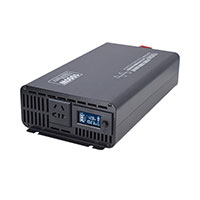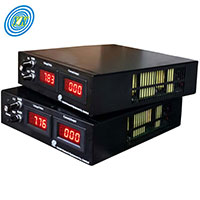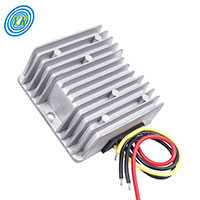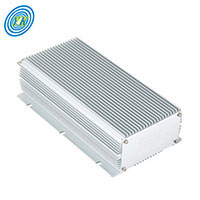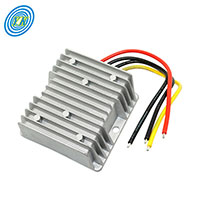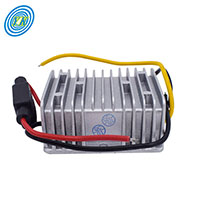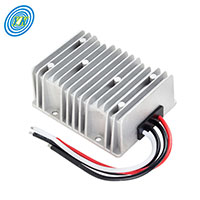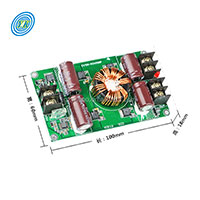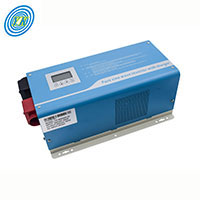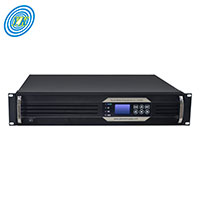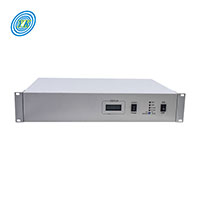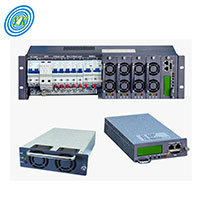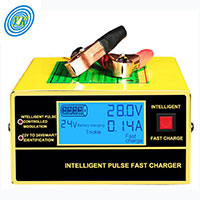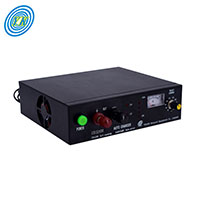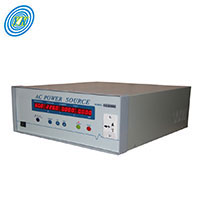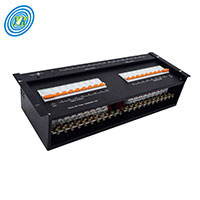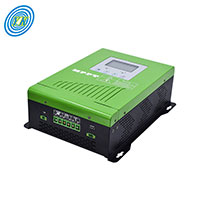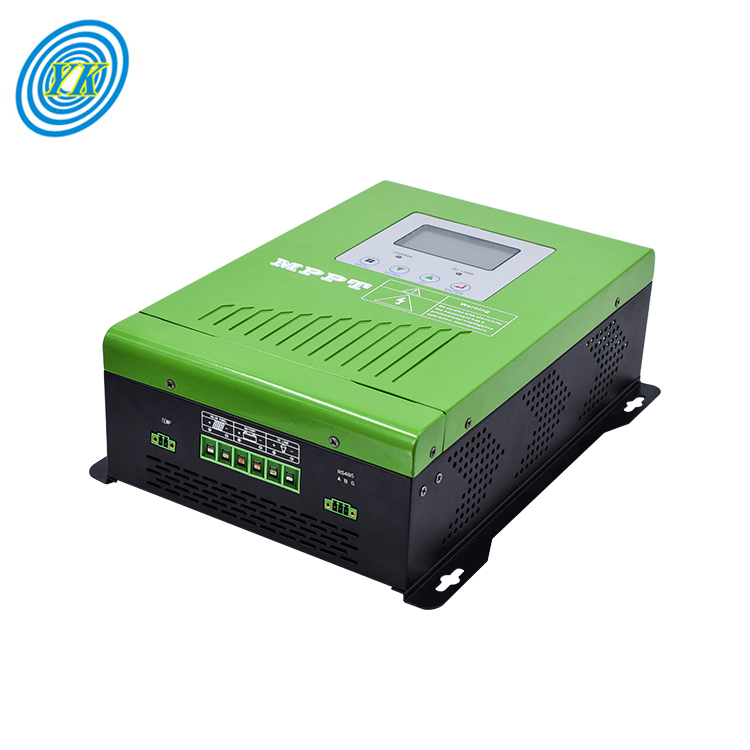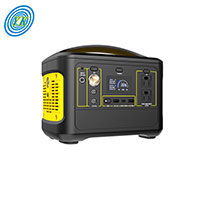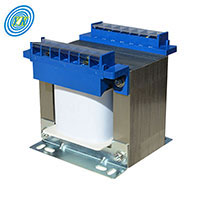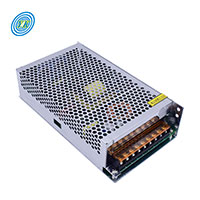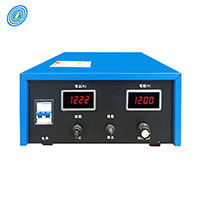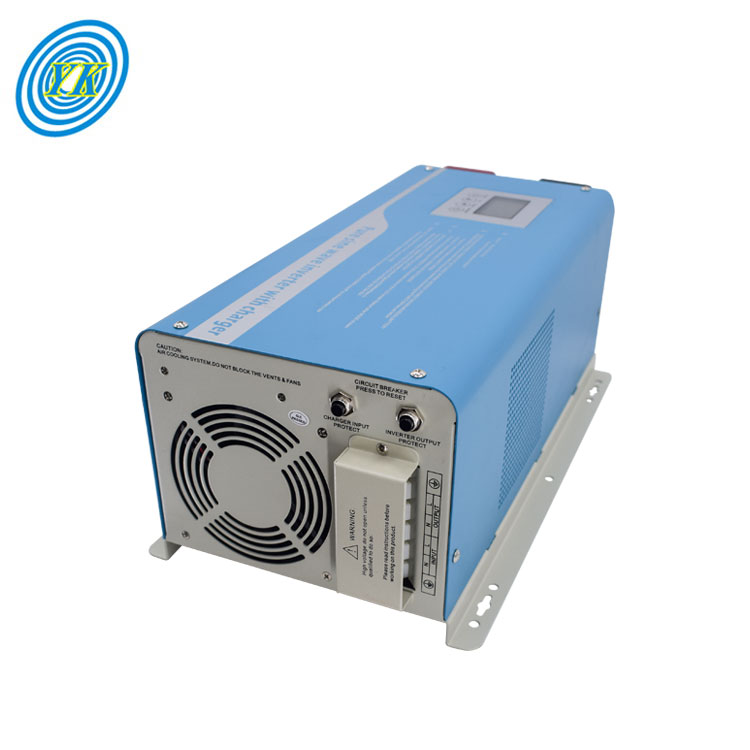
Low Frequency Inverters with Built-in Chargers
Click: 1078 Date: 08/01/2023 5::27::06 PM
Low frequency inverters are a type of power inverters that operate at low frequencies, typically around 60 Hz. They are distinguished from high frequency inverters by the size of their transformers and the switching speed of their transistors.These inverters are designed to convert DC power (Direct Current) into AC power (Alternating Current), which is used to run household items and electrical appliances. This makes them an essential component for anyone without access to a mains power source, as they can provide a plentiful amount of electricity.Advantages of Low Frequency InvertersLow frequency inverters have several advantages over their high frequency counterparts. They are designed to handle higher power spikes for longer periods, making them more robust and reliable. This capability is particularly important for devices like power tools, pumps, and appliances with electric motors that require high starting power. Low-frequency inverters can operate at peak power levels up to 300% of their nominal power level for several seconds, whereas high-frequency inverters can only operate at 200% power level for a fraction of a second.Another advantage is their reliability. Low-frequency inverters operate using powerful transformers, which are more reliable and sturdy than the high-frequency inverter’s MOSFETs (Metal-Oxide-Semiconductor Field-Effect Transistors), which use electronic switching and are more prone to damage, particularly at high power levels.Built-in Charger and Other FeaturesIn addition to their robustness and reliability, low-frequency inverters come with a wide range of technical features and capabilities, including a built-in battery charger. This feature allows the inverter to charge a battery from an AC power source, such as a generator or shore power at an RV park, truck stop, or home.Other features of low-frequency inverters include UPS (Uninterruptible Power Supply) functions, bypass mode with no battery connected, power saving mode, and various charge settings for different battery types and charging voltages.Applications of Low Frequency InvertersLow frequency inverters are designed for large off-grid power systems and are more suitably equipped for powering heavy appliances. They are typically used in power levels within the thousands, such as 2000W-3000W and above. They are ideal for powering various kitchen appliances, such as refrigerators, microwaves, dishwashers, ovens, and devices with electric motors like power tools, washing machines, vacuum cleaners, and air conditioners.Despite their larger size and weight compared to high-frequency inverters, low-frequency inverters are a great investment for anyone with a lot of powerful electrical appliances in places with limited or no access to standard electricity. They can provide a reliable backup power solution and even completely replace conventional electricity with the same quality power supply.
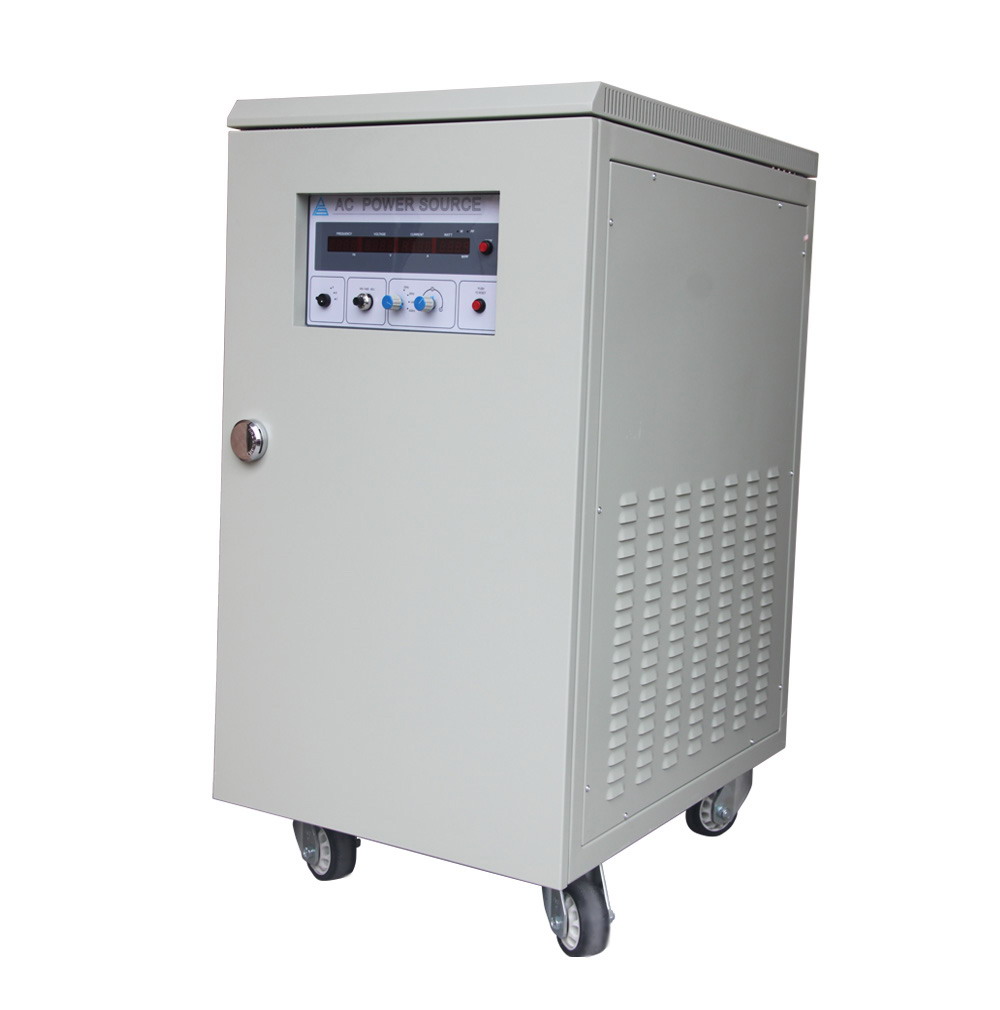
Click: 1134 Date: 07/31/2023 09::58::20 AM
Frequency ConverterA frequency converter, also known as a frequency changer, is a device that converts the frequency of an alternating current (AC) from one value to another. Besides changing the frequency, these devices may also alter the voltage, but this can be considered incidental to their primary function. Voltage conversion of AC is much simpler to achieve than frequency conversion.Types of Frequency ConvertersFrequency converters can be broadly classified into static, rotating, and combined types.Static Frequency Converters: These can be further subdivided into electromagnetic and rectifier types. Electromagnetic frequency converters are based on changing the shape of a sinusoidal alternating voltage using magnetic nonlinear elements, such as chokes and transformers with saturable cores. They are often used as frequency dividers and multipliers . Rectifier-type converters often employ transistors and thyristors as rectifiers, and are primarily used in radio-engineering equipment. Their power rating can be as high as 2 to 3 kilovolt-amperes (kVA).Rotating Frequency Converters: These converters can be built either as two machines or as one machine. The two-machine type usually combines an electric driving motor and a generator of alternating or direct current. Their efficiency can reach 85 percent, and their power ratings range from 30 to 800 kVA.Applications of Frequency ConvertersFrequency converters find usage in various applications, including:Power Grids: They are used for converting bulk AC power from one frequency to another when two adjacent power grids operate at different utility frequencies.Variable-Frequency Drives: A variable-frequency drive (VFD) is a type of frequency changer used for speed control of AC motors. The speed of a synchronous AC motor is dependent on the frequency of the AC power supply. Therefore, changing frequency allows the motor speed to be varied.Aerospace and Airlines Industries: Often airplanes use 400 Hz power, so a 50 Hz or 60 Hz to 400 Hz frequency converter is needed for use in the ground power unit used to power the airplane while it is on the ground.Renewable Energy Systems: In renewable energy systems, frequency converters are an essential component of doubly fed induction generators (DFIGs) as used in modern multi-megawatt class wind turbines.Frequency Converter TechnologyThere are two basic types of Frequency Converters: Rotary Frequency Converters and Solid State (Static) Frequency Converters. Rotary Frequency Converters use electrical energy to drive a motor. On the other hand, Solid-state frequency converters take the incoming AC and convert it to direct current (DC).A Rotary Frequency Converter is manufactured with the use of a Motor Generator and a Solid State (Static) Frequency Converter is manufactured with the use of semiconductors and power stages. The Rotary machine is brute force as opposed to the Static machine.In conclusion, frequency converters are crucial devices in various industries due to their ability to convert the frequency of an alternating current. They are particularly important in applications that require the control of motor speed, synchronization of different power grids, and in the operation of specific equipment in the aerospace industry.
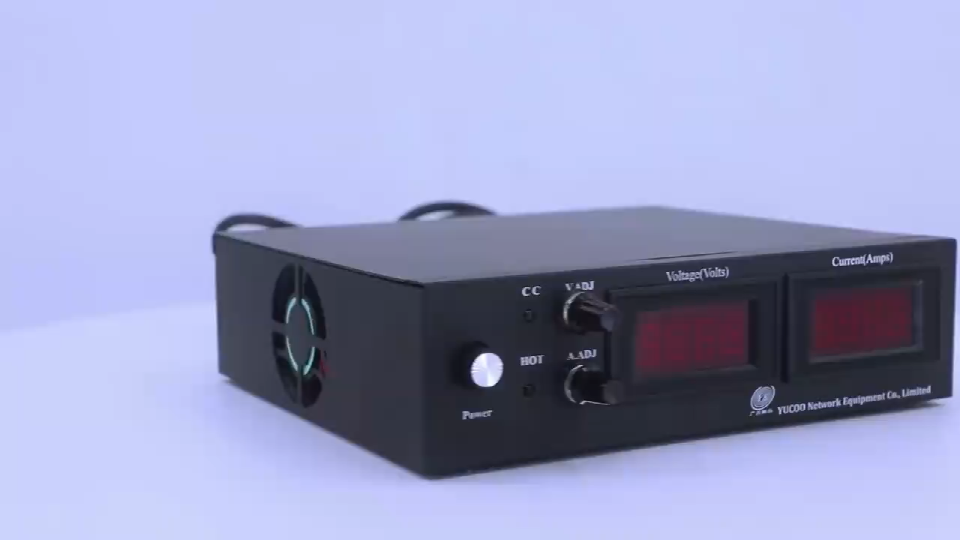
Click: 1039 Date: 07/29/2023 2::39::29 PM
Adjustable DC Power SupplyAn adjustable DC power supply, also known as a variable DC power supply, is an essential tool in the fields of electronics testing, design, and manufacturing. It provides a source of power with an output voltage that can be varied according to the user's needs. This flexibility allows for the testing of a variety of devices under different voltage and current conditions, making adjustable DC power supplies indispensable in a wide range of applications.What is an Adjustable DC Power Supply?An adjustable DC power supply is a power source with an output voltage that can be varied by the user. They are used extensively in electronic labs for testing and powering devices. These power supplies provide different voltage levels and current outputs, which are critical for testing various electronic components and systems.Key CharacteristicsWhen selecting an adjustable DC power supply, there are several key characteristics to consider:Available Power: The power output that the supply can provide is an important factor in your selection. This depends on the voltage and current that your device under test (DUT) requires.Noise Requirements: The noise produced by the power supply can affect the performance of sensitive circuits. Therefore, choosing a power supply with low noise is crucial.Programming Accuracy: The ability to accurately set the output voltage and current is another key characteristic. High precision and stability are desirable for accurate testing and measurements.Software Availability: Some power supplies come with software that allows you to automate tests and analyze data.Types of Adjustable DC Power SupplyAdjustable DC power supplies come in two main types: linear and switching.Linear Power Supplies: They operate by transforming the input voltage to the desired level and then regulating it to produce a stable output. Linear power supplies are known for their low noise output and good regulation but are less efficient and generate more heat.Switching Power Supplies: They convert the input voltage to the desired level using a high-frequency switching transistor. Switching power supplies are more efficient and compact but can generate more noise.Applications of Adjustable DC Power SupplyAdjustable DC power supplies have a wide range of applications, including:Education: They are used in electrical engineering education for practical learning and experiments.Research and Development: Adjustable DC power supplies are used in research labs for powering and testing new designs.Manufacturing: They are used in manufacturing for quality control and end-of-line testing.DIY Projects: Hobbyists and DIY makers use adjustable DC power supplies for making and testing circuits.ConclusionAn adjustable DC power supply is a vital tool for anyone involved in electronics. Whether you are a student, researcher, engineer, or hobbyist, the ability to provide a variable source of power to your projects is invaluable. When selecting a power supply, consider the power output, noise requirements, programming accuracy, and available software. Remember, more power and features do not necessarily make a better power supply – it's about how you use it.
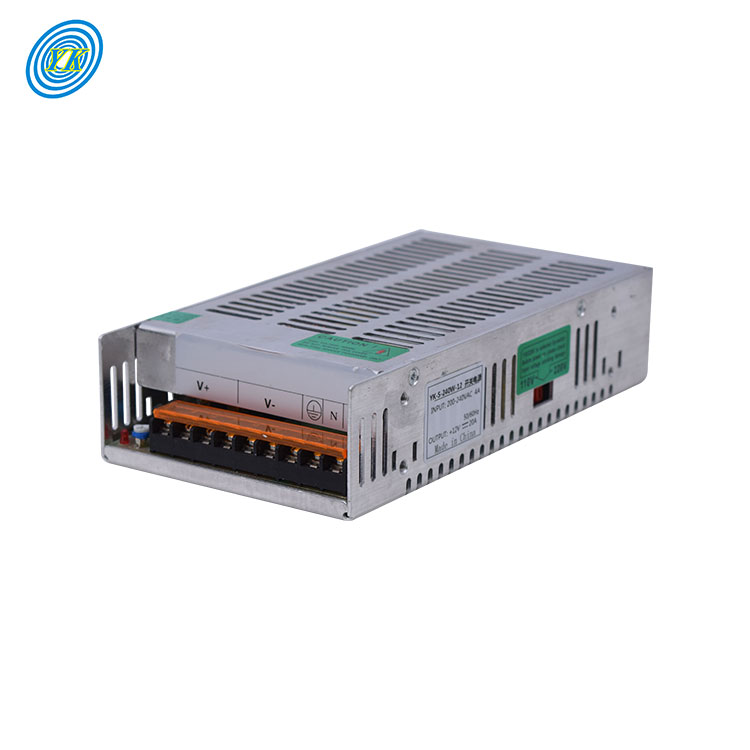
Emerging Trends in Switching Power Supply Design: Towards Higher Efficiency and Compactness
Click: 1642 Date: 07/17/2023 5::06::39 PM
Switching power supplies are widely used in electronic devices to efficiently convert electrical power from one voltage level to another. As technology advances, there are several emerging trends in switching power supply design that are focused on achieving higher efficiency and compactness. These trends aim to address the growing demand for more energy-efficient devices and the need to reduce the size and weight of power supplies. Wide Bandgap (WBG) Semiconductors: Wide bandgap semiconductors, such as silicon carbide (SiC) and gallium nitride (GaN), are gaining popularity in switching power supply design. These materials offer higher breakdown voltage, faster switching speeds, and lower conduction and switching losses compared to traditional silicon-based devices. WBG semiconductors enable higher power density, greater efficiency, and reduced system size. Digital Control and Advanced Control Techniques: Digital control techniques, such as digital pulse-width modulation (PWM) controllers, provide more precise and flexible control of the power supply. They offer improved dynamic response, better stability, and increased efficiency. Advanced control techniques like predictive control and adaptive control algorithms are also being employed to optimize power supply performance under different load conditions. Topology Innovations: New power supply topologies are being developed to improve efficiency and reduce size. These include resonant converters, LLC (inductance-inductance-capacitance) converters, and switched-capacitor converters. Resonant converters minimize switching losses, LLC converters enable high-frequency operation, and switched-capacitor converters provide higher power density and reduced size. Modular Designs and Integrated Solutions: Modular power supply designs offer scalability, flexibility, and ease of maintenance. They allow for easy expansion or replacement of power modules and provide higher reliability in multi-output applications. Integrated solutions, such as system-in-package (SiP) and power system-in-package (PSiP), combine power supply components into a single package, reducing footprint and improving thermal management. Energy Harvesting and Power Management Integration: With the increasing popularity of energy harvesting techniques, such as solar, wind, and vibration energy, power supplies are being designed to integrate these energy sources. Power management ICs enable efficient energy harvesting and seamless integration with traditional power sources. This trend promotes energy efficiency and sustainability in various applications. Advanced Thermal Management: Efficient thermal management is crucial in power supply design, especially for high-power applications. Advanced cooling techniques, such as liquid cooling, heat pipes, and multi-layer PCBs, are being employed to dissipate heat effectively. Thermal simulations and optimization algorithms help in designing compact power supplies with improved thermal performance. Overall, the emerging trends in switching power supply design are driven by the need for higher efficiency, improved power density, and compactness. These advancements contribute to the development of more energy-efficient electronic devices, reduce environmental impact, and enhance overall system performance.
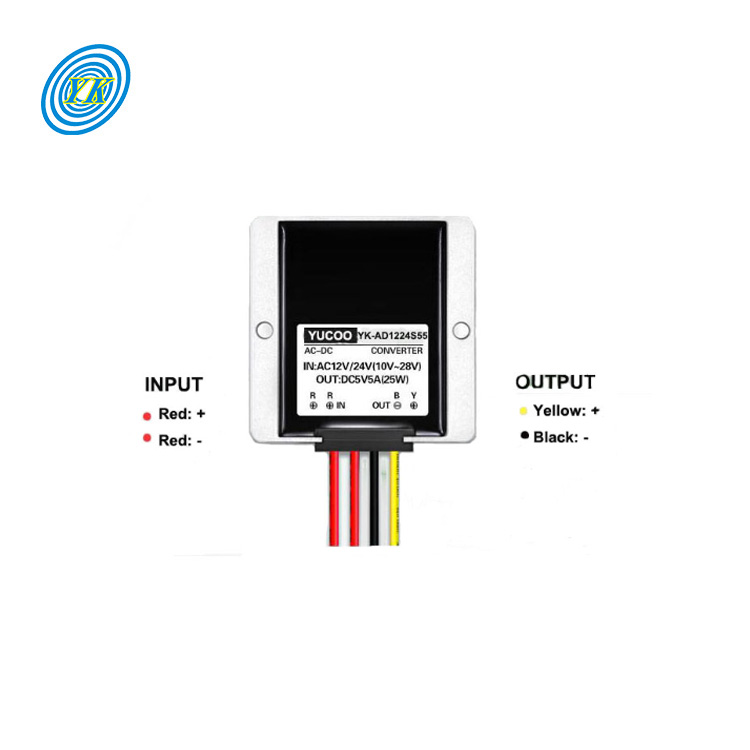
AC to DC Converter: Energy Efficiency and Utilization
Click: 1525 Date: 07/14/2023 3::45::10 PM
Introduction: In today's world, where electricity powers almost every aspect of our lives, the efficient conversion of alternating current (AC) to direct current (DC) is crucial. AC to DC converters play a vital role in various electronic devices, ensuring they receive the appropriate power supply. In this blog post, we will explore the significance of AC to DC converters, their energy efficiency, and the advancements in their manufacturing processes. Understanding AC to DC Conversion: AC power, supplied by utility grids, oscillates between positive and negative voltages. However, many electronic devices require a steady and constant flow of power, which is provided by DC. AC to DC converters bridge this gap by converting the fluctuating AC voltage into a stable DC voltage suitable for electronic devices. Energy Efficiency in AC to DC Conversion: Efficiency is a critical factor when it comes to AC to DC conversion. Higher efficiency means less energy loss during the conversion process, resulting in reduced energy consumption and lower operating costs. Modern AC to DC converters employ advanced technologies such as switching mode power supplies (SMPS) to achieve high efficiency levels. SMPS uses semiconductor switches to rapidly switch the input voltage, minimizing energy losses and improving overall efficiency. Power Factor Correction (PFC): Power Factor Correction is another important aspect of AC to DC conversion. It refers to the optimization of the power flow between the AC source and the converter. Traditional AC to DC converters often exhibit poor power factor, leading to reactive power consumption and increased strain on the power grid. PFC techniques, such as active PFC or passive PFC, are employed to improve power factor, reduce harmonic distortion, and enhance energy efficiency. Advancements in Manufacturing Processes: The manufacturing processes of AC to DC converters have witnessed significant advancements in recent years. These advancements focus on improving energy efficiency, reducing size and weight, and enhancing reliability. Some notable developments include: a. Miniaturization: Through the use of advanced semiconductor materials and packaging techniques, AC to DC converters have become smaller and more compact. This miniaturization enables their integration into space-constrained electronic devices without compromising performance. b. Thermal Management: Efficient heat dissipation is crucial for the reliable operation of AC to DC converters. New manufacturing processes incorporate innovative thermal management techniques such as heat sinks, fans, and advanced materials to ensure optimal temperature regulation and prevent overheating. c. Intelligent Control: The integration of intelligent control systems allows AC to DC converters to adapt to varying load conditions and optimize energy consumption accordingly. These control systems employ algorithms and sensors to monitor and adjust the converter's output, maximizing efficiency and reducing wasted energy. Conclusion: AC to DC converters play a vital role in our modern electronic world, enabling the efficient conversion of power from AC to DC. With advancements in energy efficiency and manufacturing processes, these converters are becoming more reliable, compact, and environmentally friendly. As technology continues to evolve, we can expect further improvements in AC to DC conversion, leading to reduced energy consumption, lower costs, and a greener future.
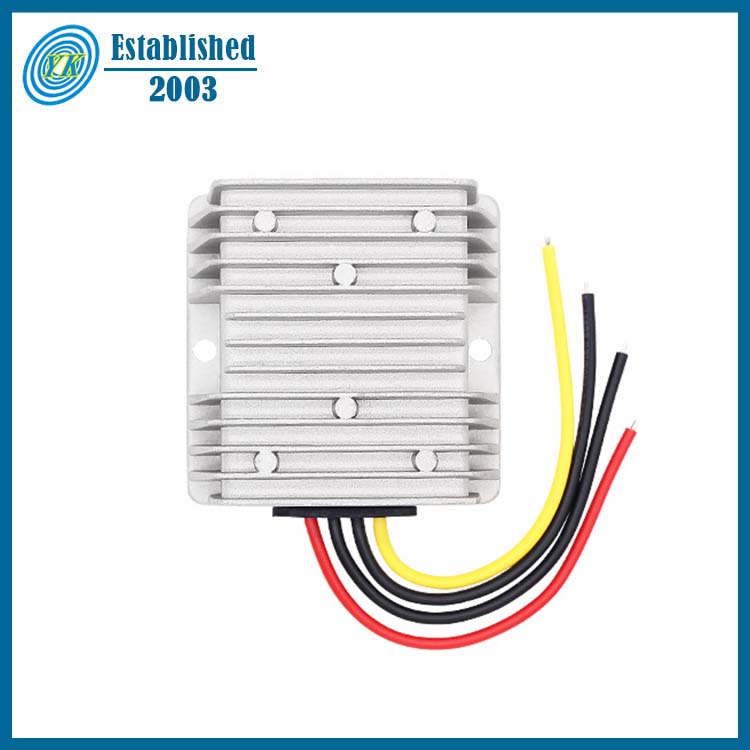
Unleashing the Potential of DC Converters: Empowering Energy Efficiency
Click: 1145 Date: 07/06/2023 5::03::28 PM
Introduction:Welcome to our blog, where we explore the fascinating world of DC converters and their transformative impact on energy efficiency. In this article, we will delve into the workings of DC converters, their applications, and the benefits they offer in our pursuit of a sustainable future.Understanding DC Converters:DC converters, also known as direct current converters, are electronic devices that convert direct current (DC) into other forms of DC power. They play a crucial role in various applications, including renewable energy systems, electric vehicles, and industrial processes. DC converters enable efficient power transmission and utilization, ensuring optimal energy conversion.Renewable Energy Integration:DC converters are instrumental in integrating renewable energy sources, such as solar and wind power, into our energy systems. They convert the DC output from solar panels or wind turbines into the appropriate voltage and current levels for use in homes, businesses, and industries. This seamless integration promotes the adoption of clean and sustainable energy solutions, reducing our reliance on fossil fuels and mitigating environmental impact.Energy Efficiency and Power Optimization:DC converters contribute to energy efficiency by minimizing power losses during transmission and conversion. Unlike alternating current (AC), which experiences losses during transmission, DC power can be transmitted over longer distances with minimal losses. DC converters ensure efficient power transmission, reducing energy wastage and optimizing power utilization in various applications.Electric Vehicle Charging:DC converters play a vital role in electric vehicle (EV) charging infrastructure. They convert the AC power from charging stations into the DC power required to charge EV batteries. DC fast chargers, equipped with high-power DC converters, enable rapid charging, reducing charging times and enhancing the convenience of EV ownership. This paves the way for widespread adoption of electric vehicles and a greener transportation sector.Industrial Applications:DC converters find applications in various industrial processes, where precise control and efficient power conversion are essential. They enable the conversion of power for motors, control systems, and other industrial equipment, ensuring optimal performance and energy efficiency. DC converters also facilitate the integration of renewable energy sources into industrial operations, reducing reliance on traditional power sources and promoting sustainability.Conclusion:DC converters are key players in our journey towards energy efficiency and sustainability. Their ability to convert and optimize DC power for various applications, including renewable energy integration and electric vehicle charging, is transforming the way we harness and utilize energy. As we continue to embrace clean energy solutions, DC converters will play a pivotal role in maximizing energy efficiency, reducing environmental impact, and shaping a greener future. Let's harness the potential of DC converters and pave the way for a more sustainable and efficient energy landscape.
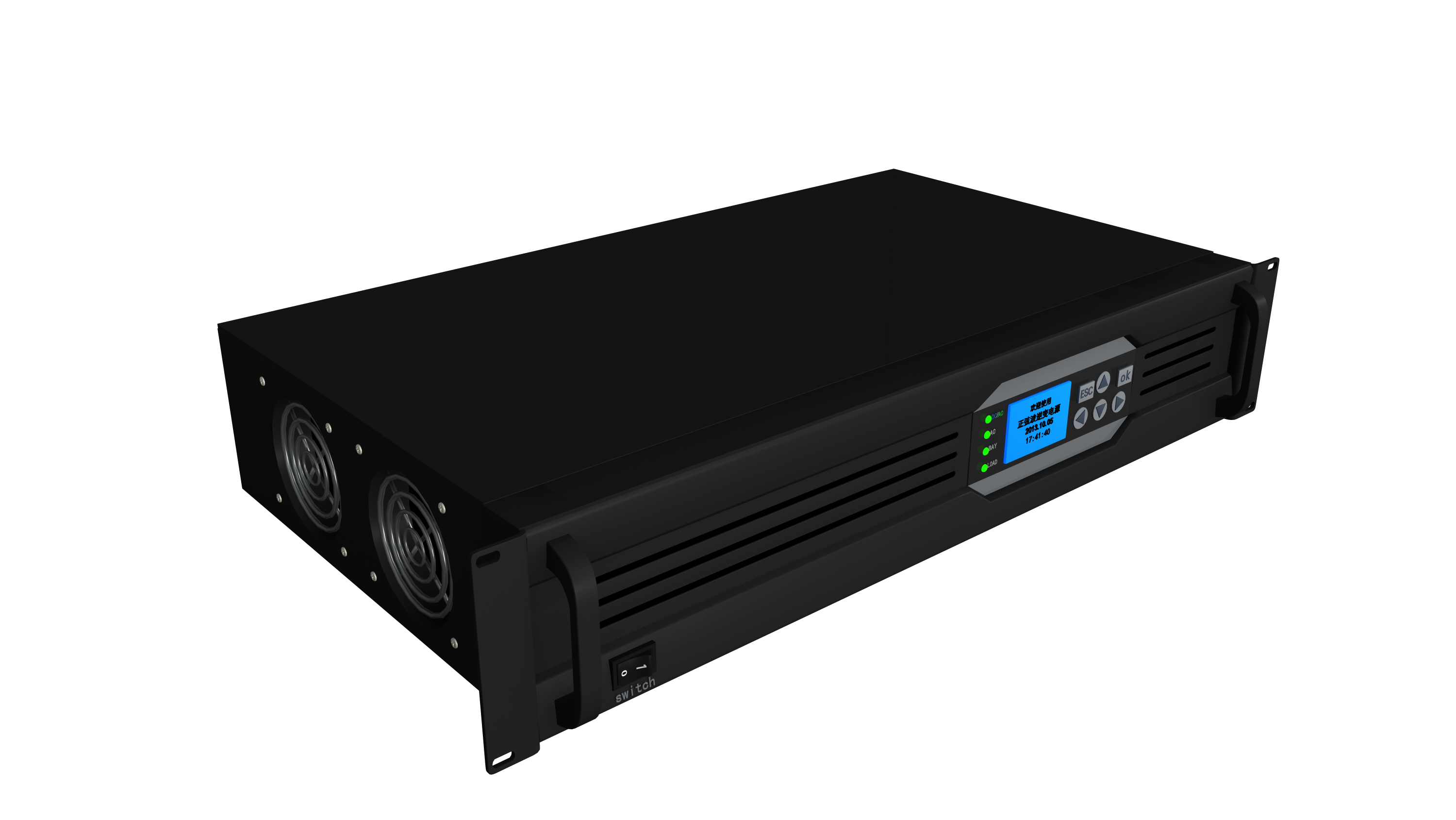
Unleash the Power of Telecom Inverters: Reliable and Efficient Solutions for Seamless Connectivity
Click: 1142 Date: 07/05/2023 4::03::24 PM
Title: Unleash the Power of Telecom Inverters: Reliable and Efficient Solutions for Seamless ConnectivityIntroduction:In today's fast-paced world, seamless connectivity is essential for businesses and individuals alike. Telecom inverters play a crucial role in ensuring uninterrupted communication and reliable power supply for telecom infrastructure. In this article, we will explore the benefits of telecom inverters and how they can revolutionize the way we stay connected.Reliable Power Supply:Telecom inverters provide a reliable and stable power supply for telecom equipment, ensuring uninterrupted communication even during power outages or fluctuations. With advanced features like automatic voltage regulation and surge protection, these inverters safeguard sensitive telecom devices from damage and ensure consistent performance.Enhanced Efficiency:Telecom inverters are designed to optimize energy usage, resulting in improved efficiency and reduced operating costs. By converting DC power from batteries or solar panels into AC power, these inverters minimize energy wastage and maximize the utilization of available resources. This not only saves money but also promotes environmental sustainability.Scalability and Flexibility:Telecom inverters offer scalability and flexibility to meet the evolving needs of telecom infrastructure. Whether it's a small-scale installation or a large-scale network, these inverters can be customized to accommodate varying power requirements. Additionally, telecom inverters can be integrated with renewable energy sources, such as solar or wind power, to further enhance sustainability and reduce dependency on traditional power grids.Remote Monitoring and Management:Many telecom inverters come equipped with advanced monitoring and management systems. These systems allow remote monitoring of power usage, battery status, and performance parameters. With real-time data and alerts, telecom operators can proactively address any issues, optimize power consumption, and ensure uninterrupted connectivity.Durability and Longevity:Telecom inverters are built to withstand harsh environmental conditions and provide long-lasting performance. With robust construction and high-quality components, these inverters offer reliability and durability, minimizing downtime and maintenance costs. This ensures uninterrupted communication and enhances the overall efficiency of telecom networks.Conclusion:Telecom inverters are the backbone of reliable and efficient communication networks. With their reliable power supply, enhanced efficiency, scalability, and remote monitoring capabilities, these inverters ensure seamless connectivity and uninterrupted communication. Embrace the power of telecom inverters and experience the benefits of reliable and efficient telecom infrastructure. Stay connected, stay productive, and unlock new possibilities in the world of communication.
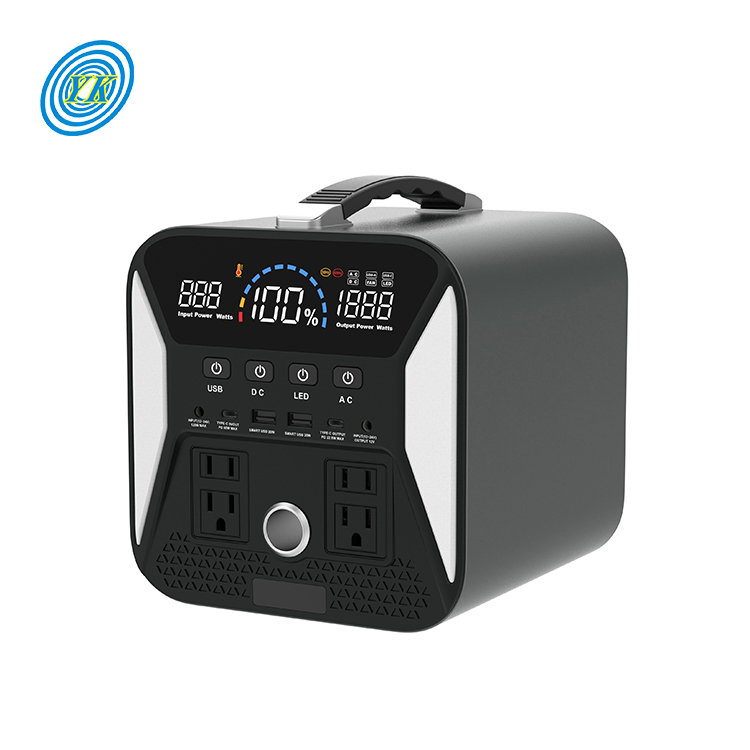
The positive impact of portable power station on people
Click: 1167 Date: 07/04/2023 3::45::40 PM
The positive impact of portable power stations on people is significant and far-reaching. These innovative devices have revolutionized the way we access and utilize electricity, providing numerous benefits to individuals and communities alike.Firstly, portable power stations offer convenience and flexibility. With these compact and lightweight devices, people can easily generate and store electricity wherever they go. Whether it's for outdoor activities such as camping or hiking, or during emergencies like power outages, portable power stations ensure that individuals have a reliable source of energy to power their devices and appliances. This convenience enhances people's overall quality of life and allows them to stay connected and productive even in remote or challenging environments.Moreover, portable power stations contribute to environmental sustainability. By utilizing renewable energy sources such as solar or wind power, these devices reduce reliance on fossil fuels and minimize carbon emissions. This not only helps combat climate change but also promotes a cleaner and healthier environment for everyone. Additionally, portable power stations encourage the adoption of sustainable practices by enabling individuals to generate their own clean energy, reducing their carbon footprint and promoting a greener lifestyle.Furthermore, portable power stations have a positive impact on communities, particularly in areas with limited access to electricity. In developing regions or during natural disasters, these devices can provide a lifeline by supplying power for essential services such as lighting, communication, and medical equipment. This improves the overall resilience and well-being of communities, enabling them to cope with emergencies and maintain a sense of normalcy in challenging situations.In conclusion, portable power stations have a multitude of positive impacts on people. They offer convenience and flexibility, promote environmental sustainability, and provide essential power in communities with limited access to electricity. As these devices continue to advance and become more accessible, their positive influence on individuals and society as a whole will only continue to grow.
